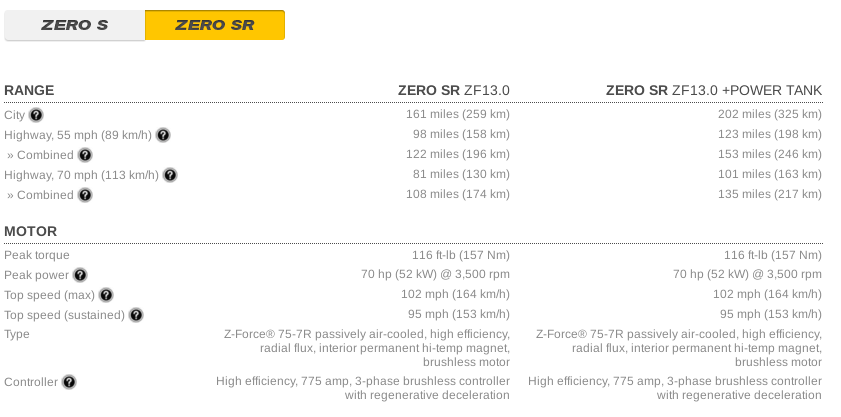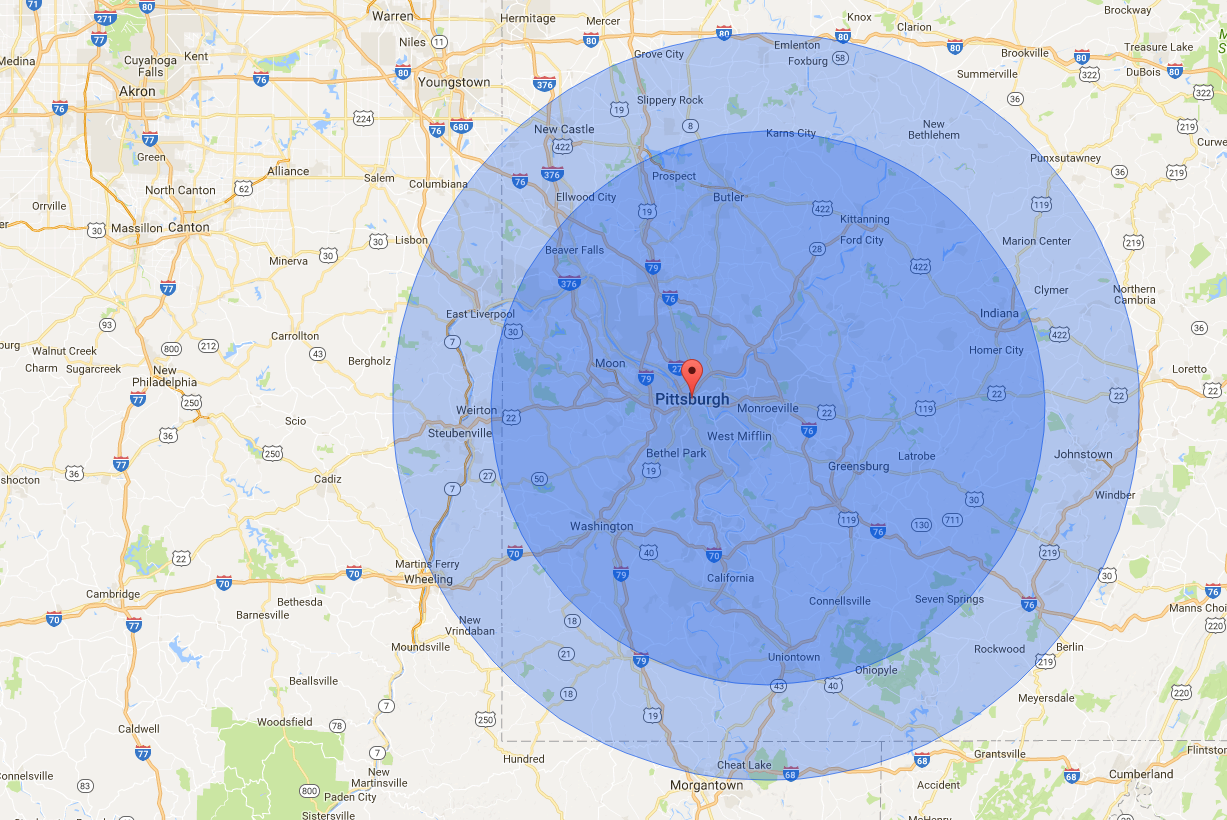With apologies to Gary Numan…
I’ll make no bones about it: My dream garage would definitely include a Tesla Model S and a Zero SR. I think they’re brilliant. Electric motorcycles are in the news cycle again, thanks to some YouTube and written reviews. Here’s Motorcyclist Magazine executive editor Zack Courts on the Zero SR. Do watch it, because the remarks on performance and handling are of the usual high standard. Courts is a bike commuter in SoCAL, so he knows of where he speaks:
Electric vehicles (I’ll use ‘EV’ for short from here) generate (sorry) predictable levels of rhetoric. We’re humans: We do not adapt to change without resistance (I’m not sorry).
The elephant in the room is range. You cannot talk about EVs without mentioning range. Zero knows it, Elon Musk (of Tesla and SpaceX) knows it, and the public sure as shit knows it because they never shut up about it. There’s a comment on the video that is prototypical of the criticism of current EVs:
i wonder how long it will take for electric bikes to reach a top range of 500 miles round trip, as well as a full charge time of 20-30 minutes, all for about $12-15k. that said, i dont think id consider buying one of these until there was at least a 300 mile range, with a charge time of 1 to 1 and a half hours max and preferably around $10k or less.
This theoretical bike’s range isn’t currently achievable from the internal combustion (IC) market, as far as I know. In fact, most bikes wont’ even manage 2/3rds of that. You see this a lot; this notion that electric will only be viable when it’s achieving utterly arbitrary performance numbers.
Taking the Zero SR as an example, here is the spec sheet concerning range:

For Commuting, The Range Problem Is Already Solved.
The average commute in the United States is 15 miles Consider that the worst scenario for EV endurance is highway running, the very opposite of an internal combustion engine, because there is no regenerative braking; no opportunity to convert the bike’s kinetic energy back into chemical (battery) energy. With that in mind, 81 miles isn’t bad at all. That’s London to Southampton, with change. Of course, that’s a one way trip.
What about a round trip?
Using the Zero SR’s two ’70mph’ stats (‘Highway’ and ‘Combined’) and a really handy web tool that draws range circles on Google Maps, I made this graphic:

This represents round trip endurance, roughly centred on Monroeville, Pennsylvania. This is approximately (only accurate if the bike could fly, and I don’t think Zero have included that feature yet) what you could do without recharging. I picked Monroeville because it’s where I live; Ohio and West Virginia, and a tiny corner of Maryland are within reach, but that’s not really the point. That area has lots of riding on great, twisty roads, and you likely would not use the highway if you’re anything like me, so the range would probably be somewhere between the two circles. For reference, my average weekend ride is about 2-3hrs long, and about 50-150 miles; lets say 75 miles on average. My commute is a 30 mile round trip, so at present the Zero SR would work for all but my longest weekend rides. Without a charge, that is. As I’ll elaborate next, realistically you aren’t going to be charging mid-ride. Not yet, so the range can be considered as a bound on any trip.
Filthy Lucre, Charging Spots, and Kilowatts
The way I see it, two things stand in the way of EVs being widely adopted, and they are two areas where IC vehicles are king: sticker cost and getting fuel in the thing. There are no two ways about it; EVs are expensive. The Zero SR is the premium chocolate in the Zero cupboard, and it will set you back about $16,000 for the base model. You’re going to want the charger tank or power pack, so call it nearer $18,000. If you’re a true 24/7/365 biker, you would experience some bottom-clenching at that price, but you’d likely still do it if you could. If you’re a weekend warrior, forget it. Despite the cruiser crowd dropping well over $20,000 on their chromed sofas; they’re buying a lifestyle, not a spec sheet. It is similar with the sportbike casuals. They’re doing a hard-charging 2-300 miles on the occasional summer weekend. This isn’t their bike. Likewise the 55yr dentist with kids just in college that buys a 600lb ADV bike the size of a Humvee to go to Alaska (there’s an internet forum full of them, trust me) won’t see anything they like either. Unfortunately, those three examples cover the majority of riders in the United States outside of CA (in which the motorbike-as-an-appliance prospers). Most riders would be considered hobbyists, for whom the motorcycle is a recreational toy. Certainly here in Western PA very, very few riders commute, even in ideal weather. Zero Motorcycles have a tough job. They’d should kill it in England, or any territory where bikes are woven much deeper into the transportation system. So what’s stopping them? Well there’s the cost. IC bikes are way, way cheaper, and more practical right now, because…
When you think about it the distribution of petroleum products on the planet is an absolute marvel. An incredible achievement of engineering and logistics. It’s also completely insane. From pulling it out of the ground, to refining it, to shipping it about and building places to distribute it from…all of this for something that is running out.
If that is possible with gasoline, it’s definitely possible with electricity. It’s already everywhere, it’s relatively easy to transport (or more accurately, transmit), but the sticking point is the charger and battery tech. That’s what we need way more investment in, and it needs to work faster. A bike with a 122 mile range is one thing (very much the low end of a typical IC bike’s endurance), but the ability to recharge it quickly – say around one hour – is crucial, and will open up much longer daily rides for the time cost of sitting down to lunch. Right now the quickest you can officially recharge a Zero SR using supported infrastructure is 2.6hrs, but that’s with multiple chargers to increase the charging circuit’s KW throughput. Realistically you’re looking at leaving it for 3-9hrs. There is a third party ‘supercharger’ available ($1755!!) so it looks like progress is being made.
It’s apparent an old engineering problem has to be solved: packaging. You can shove all of this stuff into a car chassis, you’ve got the space and don’t need to worry that much about the weight: a Tesla Model S weighs around a pretty staggering 4500lbs; that’s similar to a Chevrolet Silverado pickup. A motorcycle designer must concern themselves with both, so between batteries and charging equipment (the latter is quite large, about the size of a PC power supply) you do not have a lot of room to play with.
Glancing at an owner’s forum, it seems preferable to have faster charging versus lugging a bigger battery pack around, which takes even longer to charge.
In an ideal world chargers would be on every street corner, on every lamppost, and in every parking space. Until such time, it’s going to be a tough sell for the mass market, and there will be no mass adoption until the infrastructure is there, and without the numbers the vehicles will remain expensive, and to paraphrase The Matrix’s Agent Smith the futuristic whirr of an EV feels an awful lot like “…The sound of Inevitability”, but we’re not quite there yet.

Leave a Reply